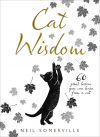Правообладателям!
Представленный фрагмент книги размещен по согласованию с распространителем легального контента ООО "ЛитРес" (не более 20% исходного текста). Если вы считаете, что размещение материала нарушает ваши или чьи-либо права, то сообщите нам об этом.Читателям!
Оплатили, но не знаете что делать дальше?
Текст бизнес-книги "With the End in Mind: Dying, Death and Wisdom in an Age of Denial"
Автор книги: Kathryn Mannix
Раздел: Жанр неизвестен
Текущая страница: 1 (всего у книги 1 страниц)

Copyright
William Collins
An imprint of HarperCollinsPublishers
1 London Bridge Street
London SE1 9GF
WilliamCollinsBooks.com
This eBook first published in Great Britain by William Collins in 2018
Copyright © Kathryn Mannix 2017
Kathryn Mannix asserts the moral right to be identified as the author of this work
A catalogue record for this book is available from the British Library
All rights reserved under International and Pan-American Copyright Conventions. By payment of the required fees, you have been granted the non-exclusive, non-transferable right to access and read the text of this e-book on-screen. No part of this text may be reproduced, transmitted, down-loaded, decompiled, reverse engineered, or stored in or introduced into any information storage and retrieval system, in any form or by any means, whether electronic or mechanical, now known or hereinafter invented, without the express written permission of HarperCollins.
Source ISBN: 9780008210885
Ebook Edition © January 2018 ISBN: 9780008210892
Version: 2017-12-30
Dedication
In a life of stories, this book is dedicated with love to the tellers of tales:
to my parents, who gave me the words;
to my husband, who distils words into wisdom;
and to our children, whose stories are still unfolding.
Contents
Cover
Title Page
Copyright
Dedication
Introduction
Reading the Label
Patterns
Unpromising Beginnings
French Resistance
Tiny Dancer
Wrecking Ball
Last Waltz
Pause for Thought: Patterns
My Way
That is the Question …
Never Let Me Go
Hat
Take My Breath Away
Pause for Thought: My Way
Naming Death
Second-Hand News
Slipping Through My Fingers
Talking About the Unmentionable
The Sound of Silence
Every Breath You Take (I’ll be Watching You)
Beauty and the Beast
Pause for Thought: Naming Death
Looking Beyond the Now
In the Kitchen at Parties
Please Release Me – A Side
Please Release Me – B Side
Travel Plans
With Love from Me to You
Pause for Thought: Looking Beyond the Now
Legacy
Something Unpredictable
The Year of the Cat
Post-Mortem
Needles and Pins
Lullaby
Pause for Thought: Legacy
Transcendence
Musical Differences
Deep Dreams
De Profundis
Perfect Day
‘Only the Good Die Young’
Pause for Thought: Transcendence
Last Words
Glossary
Resources and Helpful Information
Letter Template
Acknowledgements
About the Author
About the Publisher
Introduction
It may seem odd that, after half a lifetime of keeping company with the dying, anyone should wish to spend even more time immersed in telling their stories. It may even seem presumptuous to offer those stories in the hope that readers will choose to accompany dying strangers across the pages. And yet that is what this book sets out to do.
Throughout my career in medicine, it has been clear to me that we bring our own ideas and expectations with us in any encounter with the Big Questions. Whether that is birth, death, love, loss or transformation, everyone frames their experience through the lens of what they already know. The trouble is, whereas birth, love and even bereavement are widely discussed, death itself has become increasingly taboo. Not knowing what to expect, people take their cues instead from vicarious experience: television, films, novels, social media and the news. These sensationalised yet simultaneously trivialised versions of dying and death have replaced what was once everyone’s common experience of observing the dying of people around them, of seeing death often enough to recognise its patterns, to become familiar with life lived well within the limits of decreasing vigour, and even to develop a familiarity with the sequences of the deathbed.
That rich wisdom was lost in the second half of the twentieth century. Better healthcare, new treatments like antibiotics, kidney dialysis and early chemotherapy, better nutrition, immunisation programmes and other developments radically changed people’s experiences of illness and offered hope of cure, or at least postponement of dying, that was previously impossible. This triggered a behaviour change that saw the sickest people being rushed into hospital for treatment instead of waiting at home to die. Life expectancies increased; many lives were enhanced and lengthened.
Yet these welcome healthcare advances can only remediate us up to a point; beyond the point of saving us to live ‘well enough’ there is a point of futility. Here, technology is deployed in a new deathbed ritual that is a triumph of denial over experience. The death rate remains 100 per cent, and the pattern of the final days, and the way we actually die, are unchanged. What is different is that we have lost the familiarity we once had with that process, and we have lost the vocabulary and etiquette that served us so well in past times, when death was acknowledged to be inevitable. Instead of dying in a dear and familiar room with people we love around us, we now die in ambulances and emergency rooms and intensive care units, our loved ones separated from us by the machinery of life preservation.
This is a book about real events. Everything described really happened to someone, sometime, in the last forty years. To preserve the anonymity of the people described, almost all the names have been changed, along with their jobs, and sometimes their gender or ethnicity. Because these are stories rather than case histories, sometimes the experience of several people is woven into a single individual’s narrative, to allow specific aspects of the journey to be depicted. Many of the situations may seem familiar because, despite our averted gaze, death is unavoidable, and these accounts will have parallels in many people’s own experience.
Because most of my career has been spent working in palliative care, it is inevitable that most of these stories are about people who have had access to palliative care specialists. This generally means that any challenging physical symptoms have been engaged with and usually reasonably well controlled, and emotional symptoms are being addressed. Palliative care is not solely concerned with dying: excellent symptom management should be accessible to people of all diagnoses at any stage of their illness, when they require it. That is the broad remit of the specialty of palliative medicine. The majority of our patients, however, are in the last months of their lives, and this gives us a particular insight into the way people live when they know that they are dying. It is that part of our experience that I am seeking to convey in these stories: how the dying, like the rest of us, are mainly getting on with living.
In the main, I am offering the reader my eyes and ears, my seat at the bedside, my place in the conversations, and my perspective on events. Where there are lessons for us, these are the gifts of the people whose stories are collected here. Where there are mistakes, they are entirely my own.
It’s time to talk about dying. This is my way of promoting the conversation.
Reading the Label
Medicines usually have a label that says ‘Take as directed.’ This helps us to get the intended benefit from the prescription and to avoid under– or over-dosing. The prescriber should have described what the medicine is for, and agreed a dosing schedule with the patient, who can then choose whether or not to follow the medical advice. The label also often includes a health warning, to ensure that patients know about any potential hazards.
Perhaps it will help you to decide how best to approach this book if I describe what it’s for, and what kind of ‘dosing schedule’ I had in mind. And yes, there is a health warning, too.
This book is a series of stories based on real events, and the intention is to allow the reader to ‘experience’ what happens when people are approaching the ends of their lives: how they cope; how they live; what matters most; how dying evolves; what a deathbed is like; how families react. It’s a tiny glimpse into a phenomenon that is happening somewhere around us every single day. By encountering death many thousands of times, I have come to a view that there is usually little to fear and much to prepare for. Sadly, I regularly meet patients and families who believe the opposite: that death is dreadful, and talking about it or preparing for it will be unbearably sad or frightening.
The purpose of this book is to enable people to become familiar with the process of dying. To achieve this, the stories have been grouped into themes, beginning with stories that describe the unfolding and evolution of dying and the variety of ways in which people respond to it.
Throughout the book, each story can stand alone to satisfy readers who like to dip in and out at random, but there is a gradual progression from more concrete principles like physical changes, patterns of behaviour or dealing with symptoms, towards more abstract concepts like making sense of human impermanence and how we evaluate, in the end, what has been truly important to us.
Also threaded through the book, but not in any chronological order, is an account of my transition from a naïve and frightened student to an experienced and (relatively) calm physician. My life has been immeasurably enriched by working within clinical teams of skilled colleagues, many of whom feature in these stories. They have supported me and acted as mentors, role models and guides throughout my career, and I am deeply aware that our strength lies in teamwork, which always makes us stronger than the sum of our individual parts.
Health warning: these stories will probably make you think not just about the people in them, but about yourself, your life, your loved ones and your losses. You are likely to be made sad, although the aim is to give you information and food for thought.
At the end of each section there are suggestions of things to think about and, if you can, to talk about with someone you trust. I’ve based these suggestions on current knowledge from clinical research, on ways I have seen people and families coping with serious illness and death, and on the gaps I have encountered that could have been filled to make the last part of life, and the goodbyes, so much less challenging.
I’m sorry if you’re made sad, but I hope that you will also feel comforted and inspired. I hope you will be less afraid, and more inclined to plan for and discuss dying. I wrote this book because I hope we can all live better, as well as die better, by keeping the end in mind.
Внимание! Это ознакомительный фрагмент книги.
Если начало книги вам понравилось, то полную версию можно приобрести у нашего партнёра - распространителя легального контента ООО "ЛитРес".Правообладателям!
Представленный фрагмент книги размещен по согласованию с распространителем легального контента ООО "ЛитРес" (не более 20% исходного текста). Если вы считаете, что размещение материала нарушает ваши или чьи-либо права, то сообщите нам об этом.Читателям!
Оплатили, но не знаете что делать дальше?







